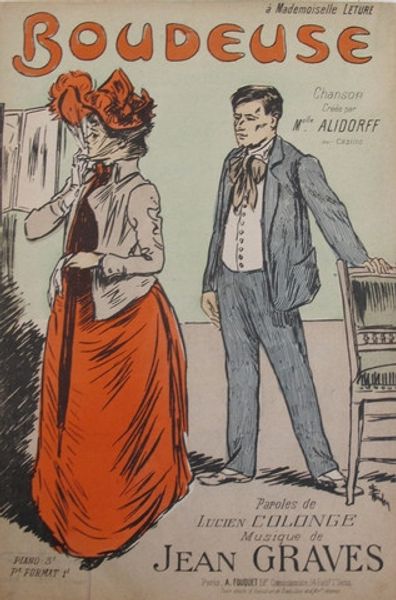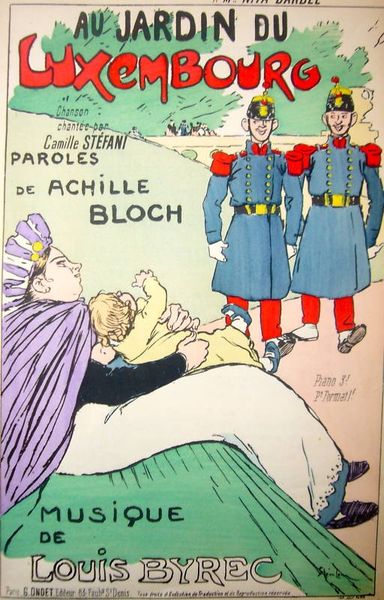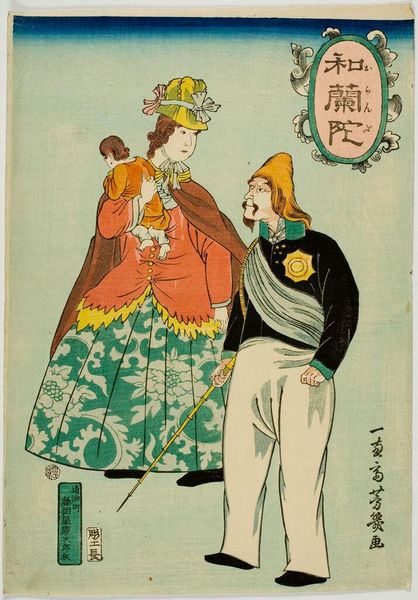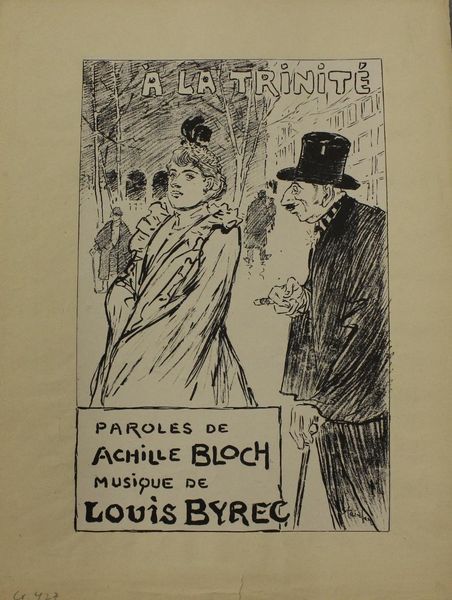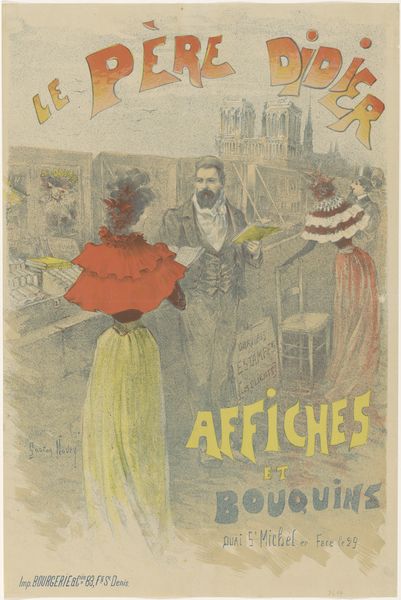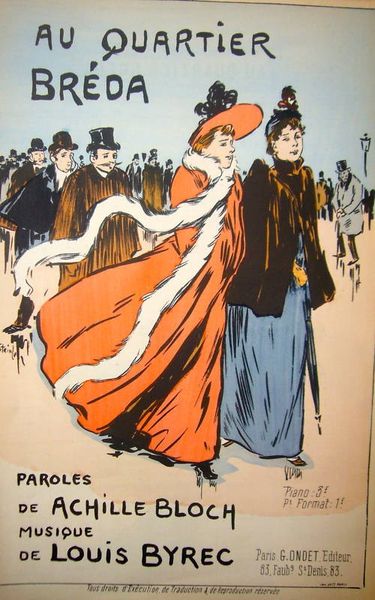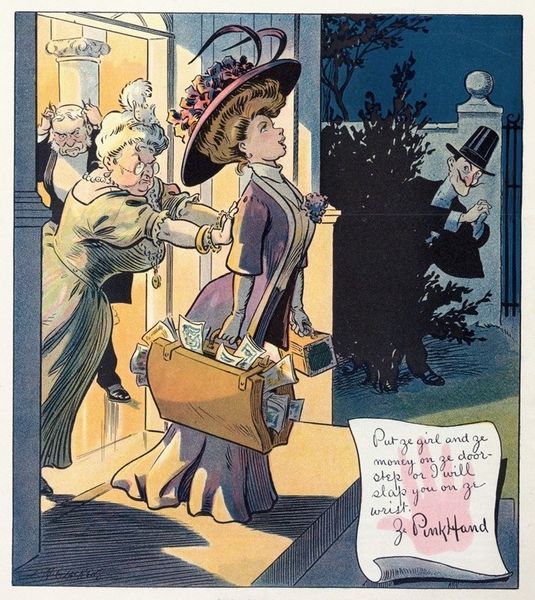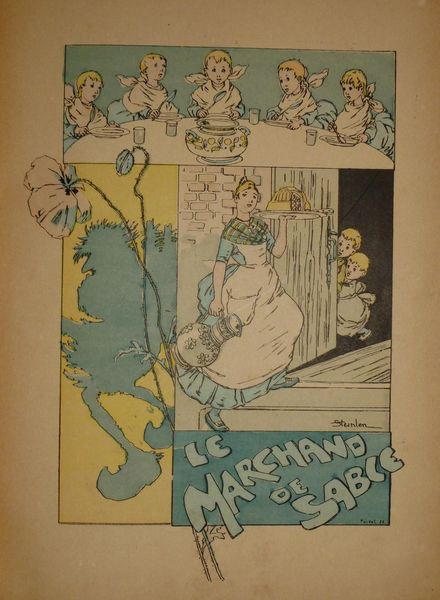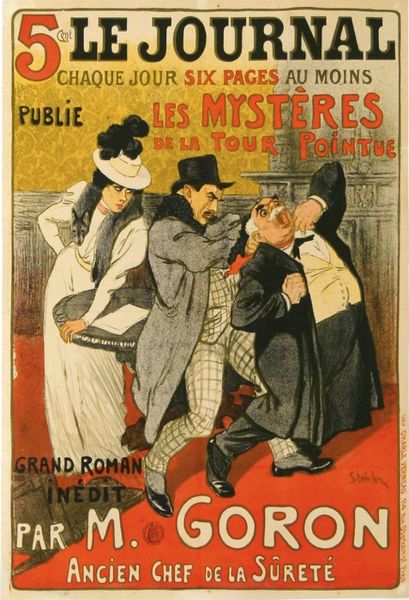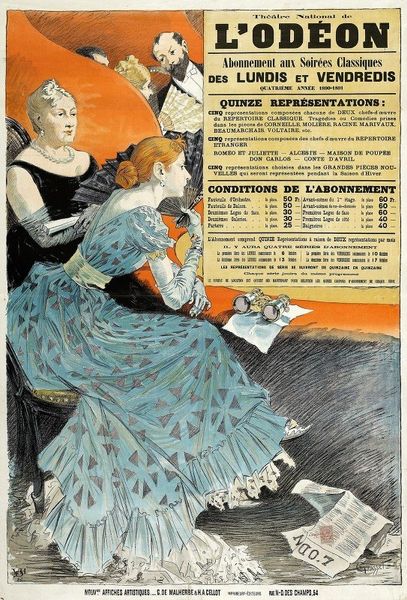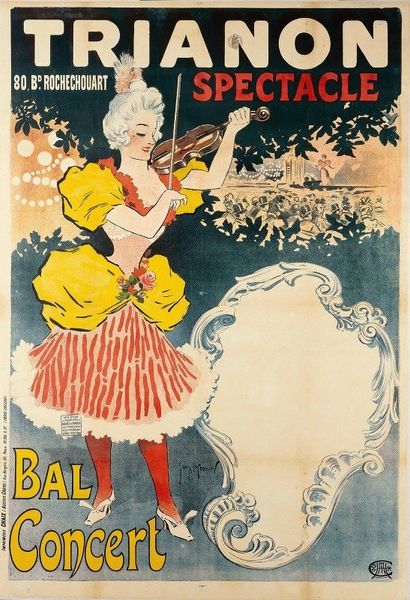
lithograph, print, poster
#
portrait
#
art-nouveau
#
lithograph
# print
#
figuration
#
text
#
cityscape
#
poster
Copyright: Public domain
Curator: Théophile Alexandre Steinlen's lithograph poster, "Boulevard des Capucines," dating back to 1893. Immediately, it presents itself with a certain Parisian flair and what appears to be the high society in motion. What strikes you most about this work? Editor: The overwhelming process of lithography immediately grabs my attention—thinking about the artist marking directly on Bavarian limestone, then pulling numerous prints to function as advertisement! It speaks to an economy that thrived on images. And even the aesthetic feels, frankly, rough and rushed! Curator: Indeed. That sense of immediacy seems intentional. Steinlen here captures the flânerie of Parisian life through key figures, their gestures loaded with the symbols of leisure and wealth. Note the gentleman with his cigarette and monocle. Editor: It’s all calculated visual communication—fashion, status, taste distilled into a disposable product like sheet music advertising! These details were vital. But where were these prints even made? And who owned the means of their creation? Curator: Let's consider that sheet music covers became coveted collectibles. These prints signal the emergent cultural authority granted to modern celebrity, particularly singers. Observe, for instance, the dedication printed "A Mlle Rejane." What are your thoughts? Editor: Yes, sheet music was part of a broader ecosystem of popular entertainment and emerging mass culture. However, focusing solely on those signs and figures can miss the material implications behind image creation and circulation. For every visible dandy, countless invisible labourers fueled production! Curator: Yet, even these figures have significance beyond simple consumption. The Boulevard itself as an archetypal location for transformation, possibility, where tradition encounters new spectacle…It represents a new self-fashioning accessible within the modern city. Editor: Right, and within these avenues the means of production have to intersect at every stage—distribution, printing, labour all play their crucial roles! That allows a glimpse into a system that created Steinlen’s poster. Curator: Precisely, so Steinlen gives us not just a poster for a song, but he opens up questions about the rapid changes—and aspirations that defined the fin de siècle moment. Editor: By examining materials we unearth broader structures which produced Steinlen’s world: its aspirations, its exclusions and inequities, its overlooked dependencies.
Comments
No comments
Be the first to comment and join the conversation on the ultimate creative platform.

